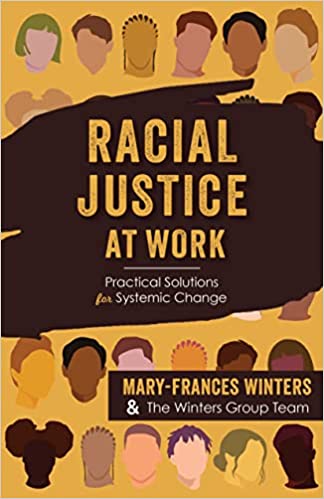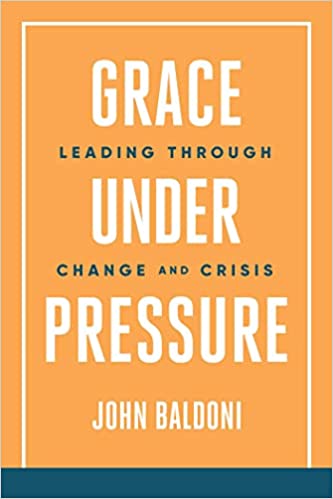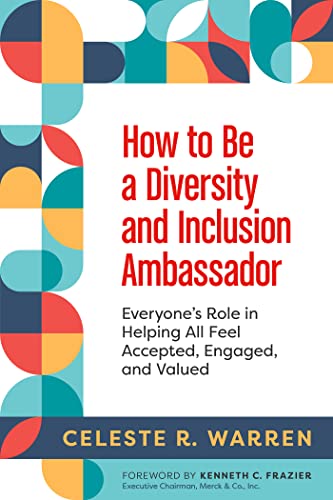
Things are busy at the quarterly journal Leader to Leader, where I am Managing Editor. We recently published our Spring 2023 issue number 108. I’ve included takeaways from each of the articles below. You can also find takeaways from the Winter 2023 issue in my January 18 blog post.
Last month we published a special online issue, The Leadership Role of Lifelong Learning. Prior to that we curated a collection of some of the most insightful and impactful columns from Frances Hesselbein, our visionary founder and longtime Editor-in-Chief, who passed away last December at 107: To Serve Is to Live: Celebrating the Life and Leadership of Frances Hesselbein, 1915-2022.
I hope you find the takeaways below (and the text of the articles they originate in) to be valuable and useful on your leadership journeys, now and in the future.
Listen, Facilitate, and Collaborate
Columnist: Sarah McArthur, Editor-in-Chief, Leader to Leader
Article: “Our Leadership Promise to Frances Hesselbein”
Sample quote:
“We are starving for civil, inclusive, respectful, principles-based, how-to-be leaders like Frances {Hesselbein} and Alan {Mulally} who lead from their hearts, who listen, facilitate, and collaborate, whose focus takes into account the bottom line and then goes beyond it to consider what is good for all of us.
We are hungry for leadership that brings us together and guides us to successfully work together and rally around the common purpose of building a better world for all of us.
For me, in addition to and in stark contrast to the despair of what we’ve witnessed just a month into this new year is the immense hope I feel for the future of humanity in the wake of Frances’s passing early morning December 11, 2022.”
A New Term in the Diversity Lexicon
Author: Mary-Frances Winters
Article: “Justice in Corporate Contexts Is New”
Sample quote:
“Justice is a new term in the diversity lexicon, especially in the corporate world. The movement started with the idea of diversity. Some years later, inclusion was added to recognize the need to recognize the increased diversity in ways that honored and respected difference. More recently, equity was added to the lexicon to make the distinction from equality. And for some more progressive organizations, the term justice has been adopted, and we now have DEIJ (diversity, equity inclusion, and justice) or JEDI (justice, equity, diversity, and inclusion). While diversity is about increasing the representation of underrepresented groups in the workplace and inclusion is about ensuring that everyone has a voice, equity is about acknowledging different needs, and justice is about correcting past harm.”
The Capacity to Lead, Evaluate, Propose, and Act
Authors: Charlie Baker and Steve Kadish
Article: “Applying the Results Framework For Success in the Public Sector and Beyond”
Sample quote:
“The method we rely on is not revolutionary. It’s evolutionary. It is a step-by-step process that leads to sustainable results. This replicable framework places a special emphasis on how to implement. It can be read, understood, and used immediately by those interested in improving the way government works in every state, county, city, and town. It’s relevant for federal government. It’s helpful to any public organization and to many private ones, too. At its core, the approach is about capacity and capability: about recognizing people’s capacity to lead, evaluate, propose, and act; and about an organization’s capability to focus, operate, and execute. It doesn’t reduce important, complex issues to a single, simple intervention. Instead, it is a comprehensive approach that respects the complexity of implementing needed change.”
How to Solve a Central, Pressing Problem
Authors: Jill Murray, Erica Barone Pricci, and Stephanie Decker
Article: “Little Innovations That Make a Big Impact”
Sample quote:
“The concept of innovation can seem overwhelming, especially for those working in existing, well-developed industries. When people think of innovation, what first comes to mind are giant companies known for revolutionizing entire industries. People often think of innovation as industry-changing products, like wearable technology or robots for the masses. Undoubtedly, this is true. However, such industry-changing innovations require massive amounts of investment. For many organizations, big innovation is probably out of reach on a daily basis. It’s entirely possible, though, to enact what we call little innovations—innovation born from necessity as an organization considers how to solve a central, pressing problem.”

Absorbing Knowledge by Osmosis
Author: Soren Kaplan
Article: “Leverage ‘Experiential Intelligence’ to Transform Your Organization”
Sample quote:
“Know-how includes your knowledge and skills. When it comes to knowledge, there’s the information and facts you might get from school, taking workshops, reading books, or watching educational videos. That’s what we call “formal knowledge.” It’s learned through some sort of documentation. There’s also “informal knowledge,” or “tacit knowledge,” which results from doing something repeatedly over time. We usually learn tacitly because we spend time practicing something or in the presence of another person, absorbing their knowledge by osmosis. Many organizations use mentoring, coaching, and apprentice programs to tacitly transfer know-how.”
Taking Action and Making Things Happen
Authors: Patti P. Phillips and Jack J. Phillips
Article: “Great Leaders Deliver Great Results”
Sample quote:
“In turbulent and challenging times, leaders must deliver results, and those results have to be at the impact level. But impact will not occur unless there is adequate attention to the lower levels. Impact will not be there if the leader does not take the actions needed to deliver the impact. So there must be behavior change in the form of taking action and making things happen. This won’t happen unless the leader fully understands how this is done, what leadership competency skills are needed, and how they can be applied to be effective. This is learning. Leaders must earn the respect of the individuals they lead by making sure that they see the actions as needed, necessary, important, relevant, and it’s something they will pursue. Essentially, all levels are needed to deliver the success expected in today’s environment.”
Values of Respect and Compassion
Author: John Baldoni
Article: “Leading with Grace When the Pressure Is On”
Sample quote:
“Leaders who lead with abundance are those who look at employees as contributors. They assume the people have the best intentions until proven otherwise. They lead with a spirit of grace in that they view their role as one whose job it is to make things better. They also demand that everyone in the organization do likewise. Values of respect and compassion underscore a commitment to ethics and integrity.
Leading with abundance is to lead with head and heart, a head to ensure proper guidance and a heart to ensure people come first. When it comes to dealing with change and crisis, grace that is rooted in the spirit of abundance becomes evident in how we treat one another. Grace facilitates our ability to connect with ourselves more genuinely so that we can connect more humanly with others. Such connections are essential to keeping oneself together when everything around seems to be falling apart.”
Actively Creating a Culture of Inclusion and Belonging
Author: Celeste R. Warren
Article: “The Importance of Being a Diversity and Inclusion Ambassador”
Sample quote:
“The workforce and workplace of the future is going to be different and less traditional than we have seen in the past. The workforce will be much more in tune with needs, which arise from their unique experiences and cultures, both personally and professionally and will be more vocal in seeking empowerment, engagement as well as equity and their career aspirations.
We need more ambassadors for diversity and inclusion in the world today. A Diversity and Inclusion Ambassador is a person who acts as a representative or promoter of diversity and inclusion within the organization. A diversity and inclusion ambassador must promote and market diversity and inclusion by influencing others to see its importance and value. They work to ensure that they are actively creating a culture of inclusion and belonging within their work environment.”

Kindness in Moments of Difficulty
Author: Mauro Porcini
Article: “The Human Side of Innovation”
Sample quote:
“Kindness is not a guarantee of trust and transparency, but it raises the probability, as well as guaranteeing a set of other benefits. A kind person is someone who not only doesn’t take advantage of moments of difficulty, but is ready to help the people surrounding them, in those moments more than ever. Each of us face a mathematical certainty in our existences: sooner or later, these moments of difficulty, in our personal or professional lives, will come. In the most challenging moment in my private life, my work team picked me up, held me, protected me, and saved me. Without their kindness, things would have gone very differently. When something like this happens, all of us benefit: we do, the team does, and the company does too. That moment opened my eyes more than ever not only to the ethical and personal value of kindness, but also of its business value.”
Asking Open-Ended Goal-Oriented Questions
Author: Kimberly Janson
Article: “Determining Leadership Potential For the Organizations of Tomorrow”
Sample quote:
“Many leaders in the CEO study indicated that learning agility shows up in people’s performance and how they approach things. With a curious mind and willingness toward creative problem-solving, you get a sense of a strong aptitude in this area. Also, they will push you for more challenges, more opportunities, more feedback, etc. Those are great indicators. Their facility in change and aptitude in change management versus stubborn-mindedness is a great beacon and indication. Using case studies, and asking folks to tell stories, traveling with people, asking open-ended goal-oriented questions will all give you a lens by which to assess for learning agility, but there are also some strong assessments available to assist as well.

Situations with a Critical ‘X-Factor’
Article: “Applying Deliberate Calm at Work”
Sample quote from: Aaron De Smet (senior partner at McKinsey, and co-author of the book Deliberate Calm: How to Learn and Lead in a Volatile World):
“in novel situations your built-in reaction or habit won’t always work. The unfamiliarity often adds more pressure and panic, leading to even more reactive, habitual responses. Yet it’s in these types of situations that adapting and learning new responses is most important. We can’t do that well when we’re stuck in a negative spiral. Unfortunately, it is not always obvious when a situation has a critical ‘x-factor’ that takes us into the Adaptive Zone where we need to learn and change.”
Better Understanding the Usefulness of Workplace Adjustments
Article: “Neurodivergent Workers and the Modern Workplace”
Sample quote from: Clara Weber (Institute of Facility Management, School of Life Sciences and Facility Management, Zurich University of Applied Sciences, Wädenswil, Switzerland; and Environmental Psychology Department, School of Psychology, University of Surrey, Guildford, UK); Beate Krieger (Institute of Occupational Therapy, School of Health Science, Zurich University of Applied Sciences), and Almuth McDowall (Department of Organizational Psychology, Birkbeck University of London):
“…estimate that up to 22% of adults are neurodiverse. Sensory difficulties in neurodiverse workers, so how they react, for example, to light or noise is poorly understood. Yet, businesses are starting to invest into modifying offices and offering workplace adjustments. Workplace adjustments are mostly “physical helpers” that aim to make it more comfortable to work in an office. To better understand what research can tell us about the usefulness of adjustments, we searched relevant literature in five databases and analyzed the evidence. We found that existing research mainly focuses on individuals with autism and neglected other conditions under the neurodivergence umbrella (such as ADHD, Dyslexia or Dyspraxia).”
